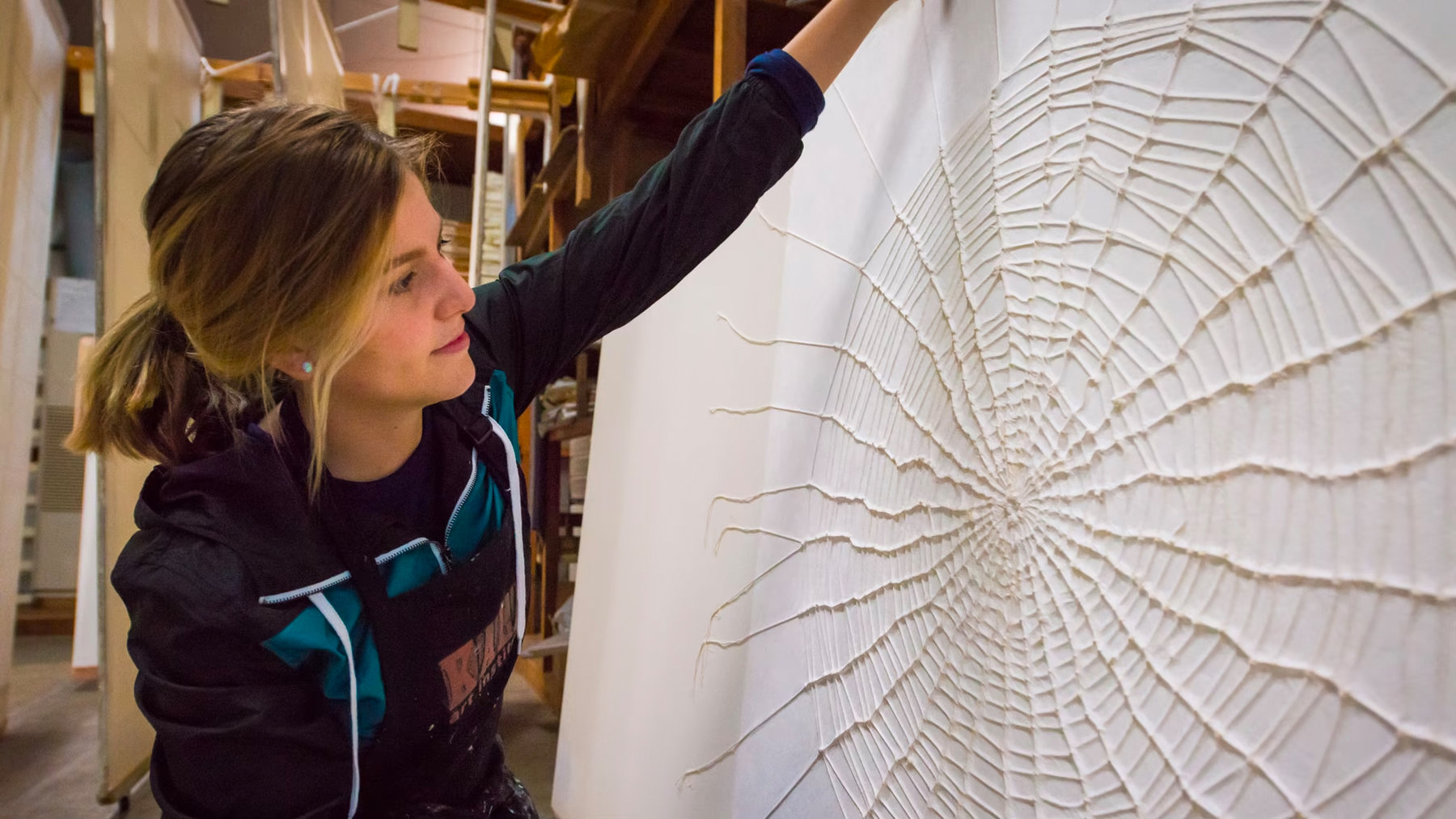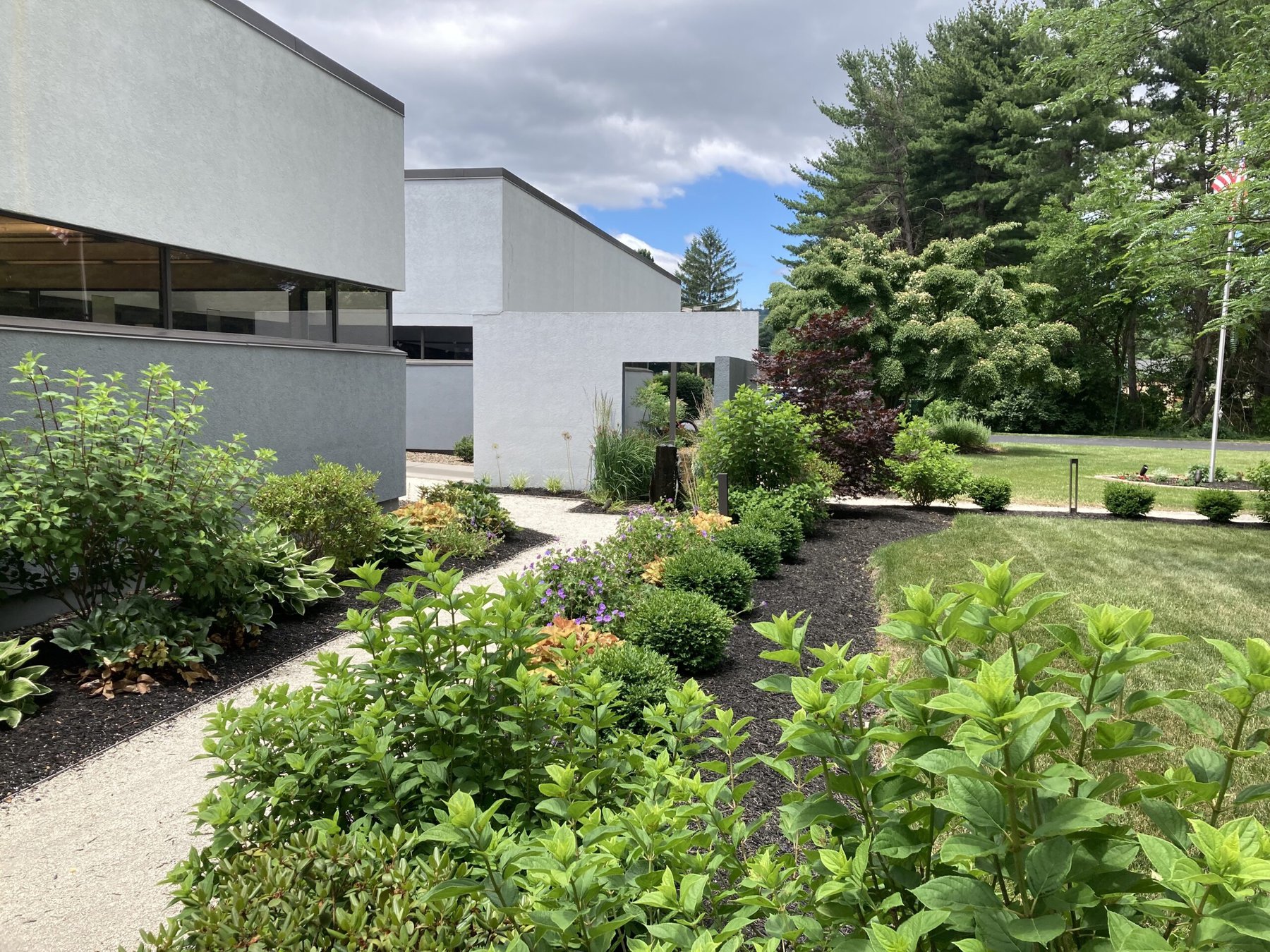We’ve seen artist-in-residence programs in a number of the towns we’ve visited. The first was in Eastport, Maine, where we ran into Richelle Gribble, a young artist based in Los Angeles, whom I consider an resident-artist extraordinaire. Over the past three and a half years, Richelle (as I’ll refer to her) has been an artist-in-residence in 15 different programs around the world, from a biosphere in Arizona to a ranch in Wyoming to the Arctic Circle in northern Svalbard, a Norwegian archipelago. I’m not kidding about the Arctic Circle.
Richelle is an accomplished artist with pages and pages of a CV that includes solo and select group exhibitions, awards and fellowships, public collections, curated projects, public speaking engagements, memberships in committees and organizations, and publications. She is 28 years old.
When I was back in touch with Richelle recently, she had just returned from the Arctic Circle. I was interested in talking with her about the idea of residencies, how she approaches her time on location, what artists’ perspectives bring to a town, and what the experience brings to an artist.
We decided to talk about her residency in Japan, with its famously complicated culture, and where my husband, Jim, and I had lived for about two years back in the late 1980s, when our children were young.
Here’s what we talked about: Along our own travels around the country for American Futures and Our Towns, many people have asked Jim and me how we start our reporting when we visit a town. It’s a fair question, and our answer is that we do some research ahead of time—and then once on scene, we spend a day or two talking to the “usual suspects” (journalists, school administrators, city-government officials, business people, librarians, people in the arts, etc.) and ask them about the interesting and compelling stories and issues in town, and about the people we should meet. Then we head out to connect with as many people in as many on-the-ground situations as possible.
I was interested in how this process worked for an artist-in-residence, so I asked Richelle the same questions: What does she do upon arrival? How does she build a sense of the place? How does that begin to translate into the art she makes? Her answers resonated with me.
Richelle told me that during her first few days or weeks in a town (depending on the length of her stay, which can range from a few weeks to a few months), she talks to lots of people in the community, engaging in conversation and listening to their language and forms of expression. She takes in the colors of the landscape and environment, looks at plants, wildlife, architecture, animal migrations, maps, photos, and the foods everyone eats. She gathers an understanding and a collection of the materials around—whether from beaches, forests, glaciers, or cityscapes. And she takes note of how the local art is made: what materials the artists use, and what their techniques and practices are. The latter were especially important, she said, as she began her international travels where the world of art could be so very different.
Then Richelle told me something that really hit home. She said she looks for recurring scenes, materials, or symbols that link one place to another, to show that all systems (social, technological, or physical) are linked around the world. This search for recurring patterns is something I did regularly via language when we visited new places. I would routinely write down interesting words or phrases that struck me—ones that surprised me or stood out. I would often make “word clouds” of a town, which taught me a lot about the culture of the place, and sometimes about universals. See a few examples here and here.
In meta-terms, these starting points build toward to her goal to reflect the community or its ecosystem through her art. She hoped to build a sense of what towns have in common and what sets them apart from each other. And ultimately, perhaps, to find a greater interconnection of communities and a sense of perspective of the planet. That is a tall order, but one she bears in mind as she works locally to reflect global themes.
Yoshinogawa: Richelle spent two and a half months in the city of Yoshinogawa, Japan, a farmland community with a population of about 40,000. It is in the prefecture of Tokushima, southwest from Kyoto. The residency was no doubt a prized one, allowing her to work at the centuries-old Fujimori family’s Awagami Factory. Minoru Fujimori took over the family factory in 1945, and was designated a “Sixth Class Order of Merit, Sacred Treasure” by the Emperor in 1986 for washi paper work (a Japanese traditional craft). Minoru Fujimori died in 2015, but the family continues the age-old eco-friendly washi paper-making technique.
Richelle created an entirely new collection of artwork at the Awagami Factory, and she described to me the challenge of how to use the traditional materials and techniques in the contemporary art that she produces. It took some doing to try to replicate the traditional practices and mimic the gestures and movements involved, she said. Presenting her contemporary work to a community steeped and sophisticated in hallowed art forms, and explaining it through a translator, would be threading a needle of honoring the craft, reflecting the practice, and making her own art.
Richelle found, as did we when we lived with our then elementary-school age children in Japan for two years, that the local residents were very interested in visitors and their ways. She taught workshops in local schools, met the city’s mayor, and attended press events. The Yoshinogawa residents were interested in how she innovated and elaborated on the traditional work she learned about, and ultimately, the Western perspective through which she interpreted and produced her art.
Richelle described her main project: She used natural materials to make the pulp and produce a map, “painting the land from the land” she told me. She collected traditional kozo fibers, pounded them into the paper mixing with mountain water, and used natural indigo dye from the plants grown by the river. She wanted the residents to see themselves in her artwork, to be able to identify their own house within a larger map. It was her way of broaching the language barrier. If they couldn’t connect through language, she said, “we could share a place this way. (The art became) another way of understanding each other.”
She also produced art on a small scale, drawing images of the many gifts the residents presented her, such as plants from gardens, and fruits and vegetables from their yards. She took photos of her drawings and placed them on a map she drew of the area, which she described as “showing the personality of the town in a more micro-intimate way through gifts exchanged and found objects in the area. It serves as a key or legend to give identity to the larger maps.”
Richelle also told me a charming spider-web story. Always on the lookout for spider webs, Richelle spotted them as she walked around town getting her bearings and her map sense. She was noticed. Foreigners are always noticed in Japan, in our experience. If our little boys got temporarily lost in our Japanese neighborhood, neighbors—even ones I had never seen before—would bring them home, knowing exactly who we were and where we lived. One older man was watching Richelle looking for spider webs, and after a time, he offered to guide her along her walks about town, pointing out the webs he had spotted on her behalf.
Her art became a way to be something way more than a tourist, to open the door to a different kind of more intimate experience with the country. More like being a scientist or a detective, she described it to me. A common component of residencies is an open-door policy, where people in the town can stop by. For Richelle, this was valuable, as much of her work was driven by ideas and messages she took in from her visitors. And for those who drop by, she thought, it is one of the few times that people get to see what happens in the studios, to learn how involved the process of making art really is—seeing the incubating, testing, and interaction, as she described it, to create the final product. They see the process from start to finish.




